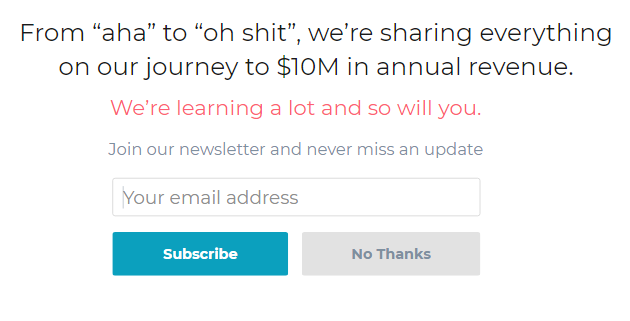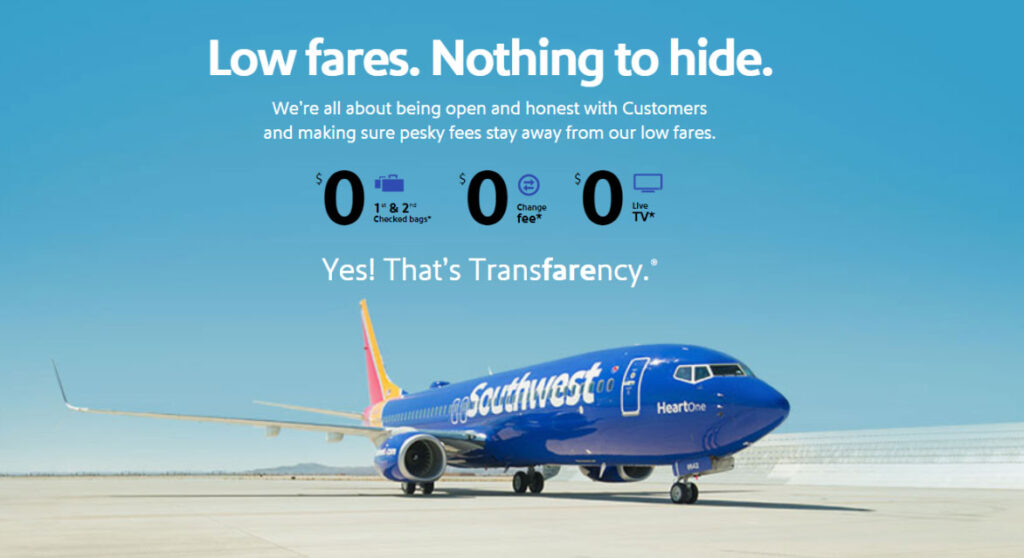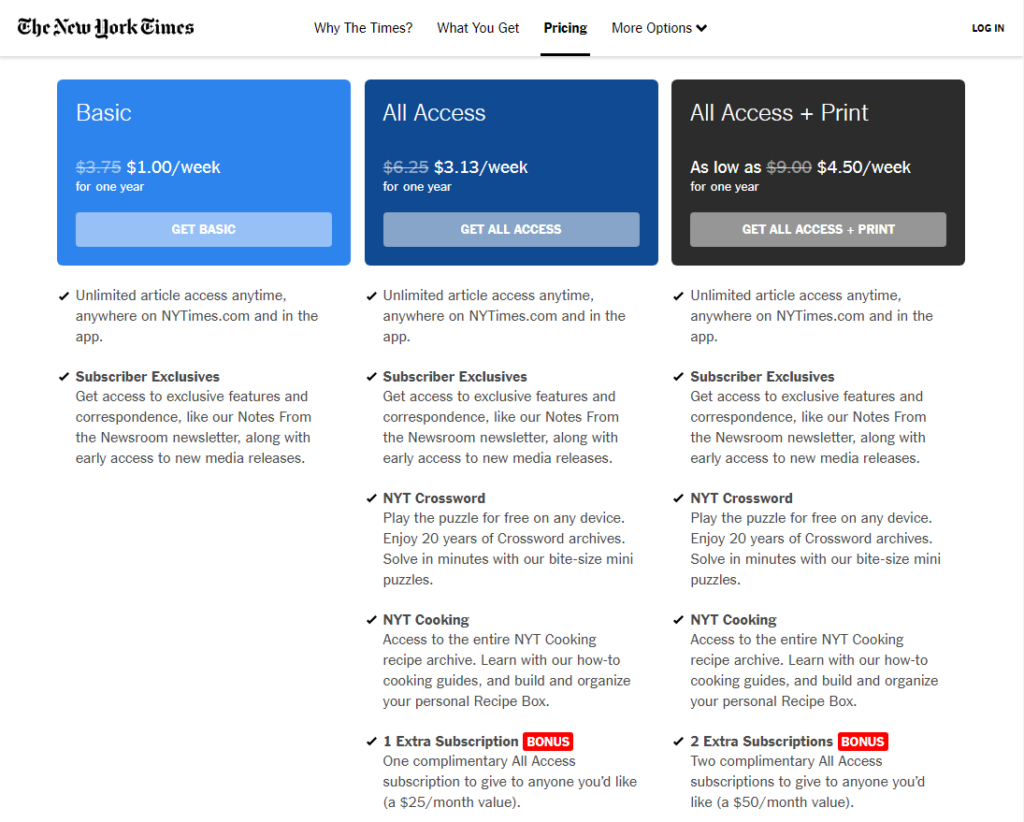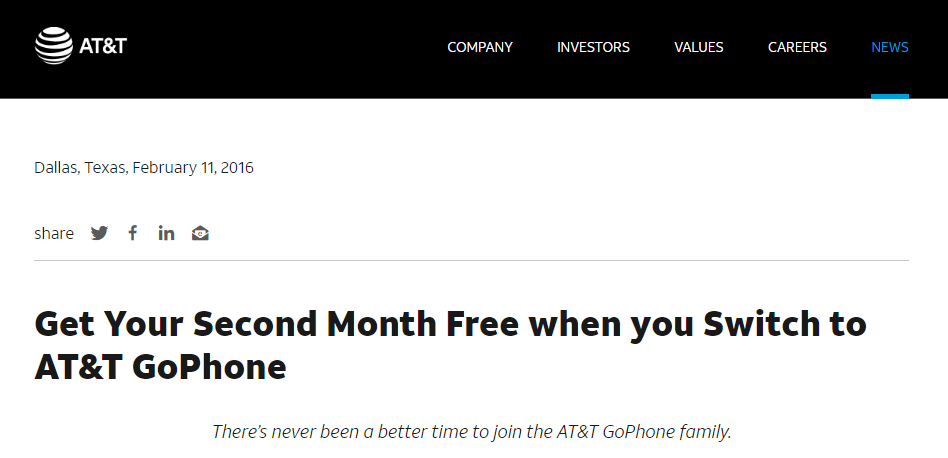Perception is not always based in reality, and therefore isn’t always rational.
“Sensation transference,” for example, happens when product packaging changes consumers’ experience of a product. Coca-Cola dealt with repercussions of the phenomenon in 2012 when some customers said that the soda tasted differently when packaged in a special white can with polar bears. The soda recipe, Coca-Cola assured, was unchanged.
While Coca-Cola had to spend time recovering from their well-intentioned fundraising effort for an endangered species, perception goes the other way as well.
The now well-documented 2017 Fyre Festival fiasco is a great example of an overinflated perception of value. Through a combination of luxury prices, social media influencers, and other tactics, the organizers of the festival made it appear as if the event was much more planned out and extravagant than they could deliver.

While it’s important to keep expectations realistic, raising your perceived value doesn’t have to come at such high risks. Here are 7 ways to raise customer perception and grow recurring revenue.
1. Tap Into Perceived Value; Provide Actual Value
As we delve into ways to increase customers’ perceived value of your business, it’s important to remember that you must still provide quality in your product or service. One should avoid being the subscription version of the Fyre Festival. Misleading consumers who will simply be disappointed upon sign-up will only lead to high churn rates, which obviously doesn’t help recurring revenue.
Instead, identify the value you actually provide, and use these tactics to highlight that value. By attracting the right customers, you’ll be more likely to experience high retention and secure customer loyalty over time.
One of the challenges of increasing perceived value in subscription businesses versus other industries is the need to maintain that perception month after month, year after year, to keep subscribers on board. As mentioned before, you can increase the perception of value, but at the end of the day, you need to deliver continually in order to keep those customers around.
2. Raise Perceived Value by Proving Your Actual Value
This method seems obvious, but not all businesses succeed at it. It can be hard to understand why customers don’t see the value you see in the product you’ve poured your heart and soul into. While the benefits of signing up may be clear as day to those within a business, projecting that value to potential users is a different endeavor altogether.
How do you prove your value? There are many ways. Free trials are a common SaaS (Software as a Service) technique, allowing users to experience a product at no cost for a limited time. This short-term contract gives the customer a “proof of concept,” demonstrating that the product delivers as promised.
Other methods used by both SaaS and more traditional businesses are money-back guarantees and proof of authenticity. Offering guaranteed refunds for dissatisfied customers decreases their sense of risk—after all, they’ll get their investment back if they’re unhappy with the product.
A proof of authenticity works a little differently. It assures someone is getting what they expect when purchasing something of historic value, or lends credibility when purchasing something so valuable that there is a valid fear of receiving a knock-off.
This also works for handmade items and businesses targeting altruistic markets. For example, subscription GlobeIn Artisan Box assures that all their items are fair trade, and even includes booklets telling the stories of the people, communities, and companies behind each monthly gift.
More common in B2B (Business to Business) SaaS is the use of case studies to prove value. Case studies focus on social proof and report on how a product helped a business achieve results. This makes it clear to potential customers how exactly they stand to benefit from signing up.
A well-written case study should clearly describe the problem a client was experiencing, how the product addressed that problem, and a satisfying resolution backed by numbers. Whether via percentages, dollars, or hours of work saved, results need to be measurable for prospective clients to see the value your business offers. Stax Bill has a collection of such case studies on their clients.
Case studies can be verbalized, too, when appropriate. A potential client who is on the phone or meeting in person, for example, doesn’t have to read a case study to get the information. If your team is well-versed in the businesses’ case studies, those stories become conversation points that also serve to convert curious shoppers into new clients.
Not a B2B company? The B2C (Business to Consumer) equivalent of case studies is, as you may have guessed, customer testimonials and reviews. Whether through social media or a collection process that you translate to displaying on your business website, prospective customers want to know what paying customers’ experiences have been like.
In the age of review sites and lightning-speed information sharing, sharing positive testimonials and reviews is key to raising perceived value.
And while displaying testimonials is great, customers have hopefully been so impressed by your product that they’re spreading the love via word of mouth as well. Word of mouth is possibly the greatest driver of customer growth for all business types.
When potential customers hear a recommendation from a friend they trust, they seek your business out. This saves you from expending energy and costs to look for them. Their perceived value decreases your acquisition costs and, if you meet expectations, ensures their continued subscription.
3. Transparency Adds to Value Perceptions
Trust plays a major role in recurring revenue. Customers who trust your business are more likely to be “sticky”—loyal even when the competition lowers their prices. Another way to prove your value to customers is to gain their trust through process transparency.
How do you achieve the results you’re sharing? How are you measuring the results? By being honest, customers gain an understanding of not just how good your business is, but also why it’s so good.
Groove founder Alex Turnbull is a great example of someone who’s all about transparency, documenting the multiple failures, successes, and big decisions of the startup on the Groove blog. From how they went from $0 to $100k/month to their recent “rebirth”, readers see everything from the “aha” to “oh shit” moments…as Groove’s newsletter prompt playfully suggests.

Southwest Airlines uses transparency as a central part of its marketing campaign.

Transparency builds trust, and trust attracts sticky customers who are sure to be subscribers for the long-haul. Reaffirm that trust with a strong product that delivers, and your recurring revenue is assured.
4. Increase Perceived Value by Appealing to Emotions
We’ve seen these methods before: “Limited time offer!” “Only 30 left in stock!” “First 100 customers get a free tote!”
Creating a sense of scarcity or urgency can certainly lure on-the-fence customers over, but once they’re on your side, your job is different than that of a traditional merchant. As subscribers, your customers need to be satisfied enough with your product to keep paying month after month, or year after year.
One way SaaS businesses have adjusted this approach is by creating a sense of exclusivity. For example, you can read five online articles from The New York Times for free each month without an account. To read more, however, you’ll need to sign up for one of their subscriptions:

Even the basic package has “subscriber exclusives” which non-subscribers can’t get, and each tier offers more exclusive offerings the others don’t (the “all access + print” subscription, of course, includes exclusive print-only features and editions).
The New York Times also uses a couple of pricing tactics to increase perceived value: displaying an “actual value” with strike-through text, and identifying “bonus” features which also have monetary value. We’ll talk a little more about these and similar tactics to raise perceived value later on.
Another way to appeal to potential customers’ emotion is to align the subscription with the customer’s core values.
The Bookworm Box, for example, donates 100% of profits to charities around the world. BarkBox also partners with shelters and rescues to spread education, technology, and volunteerism that lowers barriers to a dog-inclusive world.
5. Branding to Increase Perceived Value
Of course, in the case of subscription boxes, packaging (and the experience of unpackaging) play an important role in business perception.
Taking the time to generate expert design packaging, professional product photos, and aesthetic layout advertisements are important steps to maximizing your perceived value. You may provide great products and service, but if your packaging, photos, and ads look unprofessional, your customers may not see past it to the actual value you provide.
Similarly, SaaS businesses need to ensure that user interfaces and the aesthetics of apps and websites convey the level of professionalism and/or expertise expected of subscription software.
If potential customers find your business via a web search and open a site that looks like it was built on MySpace, they’ll likely be turned off. (Unless, of course, the site is a well-executed parody demonstrating how they can improve customers’ websites—but that would be impressive to pull off!)
If your business is unlucky enough to be buried under a troublesome history, complete with lots of bad reviews, it may be worth it to consider re-branding. Customer emotions play a big role in their stickiness, so sometimes taking lessons learned from past failures and moving forward with a new face gives a business another chance at success.
Business analytics KPI dashboard Databox shared their one-week rebranding method after realizing that selling to enterprise companies simply wasn’t working. After the switch, they attracted a wider variety of companies and helped service firms become more efficient, increasing their recurring revenue with happy customers.
Lastly, in an increasingly automated world, raising perceived value means meeting both the demand for automation (via customer dashboards) as well as for human connection when needed. Display screengrabs of your customer interface and be sure to brag about your customer support availability to assure prospective users that they’ll have all their needs met.
And, of course, meet those needs.
6. Mitigate Risk to Add to Value
Another way to increase perceived value is to, in fact, decrease perceived risk. The aforementioned money-back guarantee is one way to achieve this, but in the SaaS world, security is an ever-increasing concern for customers.
How do customers know they can safely share their credit card information with you? How do they know it’s safe to store any of their personal information on your platform? Once again, this circles back to trust.
In order to gain trust in the arena of information security, provide information about your secure encryption channels and include PCI compliance, Verisign, or TRUSTe privacy seals where appropriate. These little things, which your business should already be using for credit card payments and email lists, help customers feel more comfortable and confident in the value of your business.
7. Use Tactical Pricing to Increase Perception
We’ve touched on this topic with The New York Times example above: one way to raise perceived value is to display a customer value that is higher than what you are actually charging for your product.
These “customer values” are generally calculated in terms of how much money, time, or resources a customer will save or gain from using a product. For example, a NYT reader may spend $9/week buying newspapers without a subscription, but with it, they only spend $4.50/week.
The New York Times example also noted “bonus” exclusive offerings in the form of extra free subscriptions. Strangely, “free” has been proven to raise a customer’s perception of value more than “discounted” offerings.
In what amounted to a conclusion that the average customer simply doesn’t perform math while shopping, a University of Minnesota experiment showed that when presented with a 2-pack of hand lotion, customers were more likely to buy the one marked as “Buy 1, Get 1 Free” than the “Buy 2, Get 50% off each” package.
For some reason, consumers perceive “free” items as equally valuable, whereas “discounted” items may be undesirable, thus the discount. Use free offers over discounts when possible to harness this opportunity for increased perception, like AT&T did in a GoPhone promotion:

Another way to raise your perceived value through pricing is to show how you provide the same quality as your higher-priced competitors. If your market research reveals that competitors are charging more for something you provide, then your product is worth as much as the competitors’ pricing.
Prevent customers from thinking your product is low-value by demonstrating how your product measures up; they’ll come for the competitive pricing, and stay for the proven quality.
If comparing to a competitor isn’t an option, another way to help customers see your value in pricing is to stack your pricing against something they probably buy all the time. If you ‘reframe’ your subscription price to be equivalent to a few cups of coffee or a couple pizzas, customers may see your product as well worth the investment.
After all, if they’re getting more out of your product than the few moments of gratification food and beverage offer, that makes your value higher than something they already regularly spend money on.
A common B2B practice is to actually hide pricing until value has been established. By not displaying pricing on your website and requiring potential customers reach out, you can avoid “sticker shock” and instead take the opportunity to explain your value before revealing the price.
As a last resort you can, of course, simply raise your prices. While there is a lot to be said for perceived value of high-priced products, there is just as much to say about making sure you deliver on expectations set by your pricing. If you’re going to raise your prices, make sure it’s for a good reason. In other words, provide a product that is as—or more—valuable than what you are charging.
While pricing can be a delicate art, raising customer’s value perception of your product doesn’t have to be. By identifying your true value and taking advantage of opportunities to show that value off, increasing perceived value can begin to come naturally as customers experience and share their successes. Provide quality, and achieving a high perceived value that keeps customers subscribed is sure to follow.
Quick FAQs about raising Perceived Value
Q: What is perceived value and why is it important for recurring revenue?
Perceived value is the customer’s evaluation of a product’s or service’s benefits and costs, relative to its competitors. It is important for recurring revenue, as increasing the perceived value of a product or service can enhance customer retention, loyalty, and long-term revenue.
Q: What can be learned from Coca-Cola and Fyre Festival about perceived value?
Coca-Cola’s example shows that packaging and presentation can affect customer experiences, whereas the Fyre Festival highlights the risks of overinflating perceived value without delivering on promises. It is essential to provide a quality product or service while maintaining realistic expectations to ensure customer satisfaction and build a sustainable business.
Q: How can offering free trials, money-back guarantees, and proof of authenticity increase perceived value?
Free trials allow customers to experience a product without commitment, which can demonstrate the value of the product. Money-back guarantees reduce the perceived risk, ensuring customers can get their investment back if they are unhappy. Proof of authenticity verifies the product’s quality, addressing concerns about receiving an inferior or fake product.
Q: What role do testimonials, reviews, and case studies play in building perceived value?
Testimonials, reviews, and case studies provide social proof of the product’s value, benefits, and effectiveness. They showcase real-life examples of how a product or service has positively impacted customers and businesses, which helps potential customers understand the product’s value and how it could benefit them.
Q: How can transparency and trust affect the perceived value of a product or service?
Transparency in processes and operations helps customers understand how a business delivers value. Trust is crucial for customer loyalty and retaining recurring revenue. When customers trust a business, they are more likely to remain loyal, even when competitors offer lower prices.
Q: How can creating exclusivity and aligning with customer values enhance perceived value?
Exclusivity makes customers feel special and motivated to keep the subscription for extra benefits. Aligning with customers’ core values can establish an emotional connection, which increases the likelihood of customer engagement, loyalty, and long-term revenue.
Q: What pricing strategies can be used to increase perceived value?
Various pricing strategies can improve perceived value, such as offering free or discounted items, displaying higher “customer values” than the actual price, comparing your product with higher-priced competitors, and reframing the subscription cost to everyday purchases. Ensuring that the product delivers on expectations for the price set also contributes to maintaining perceived value.








